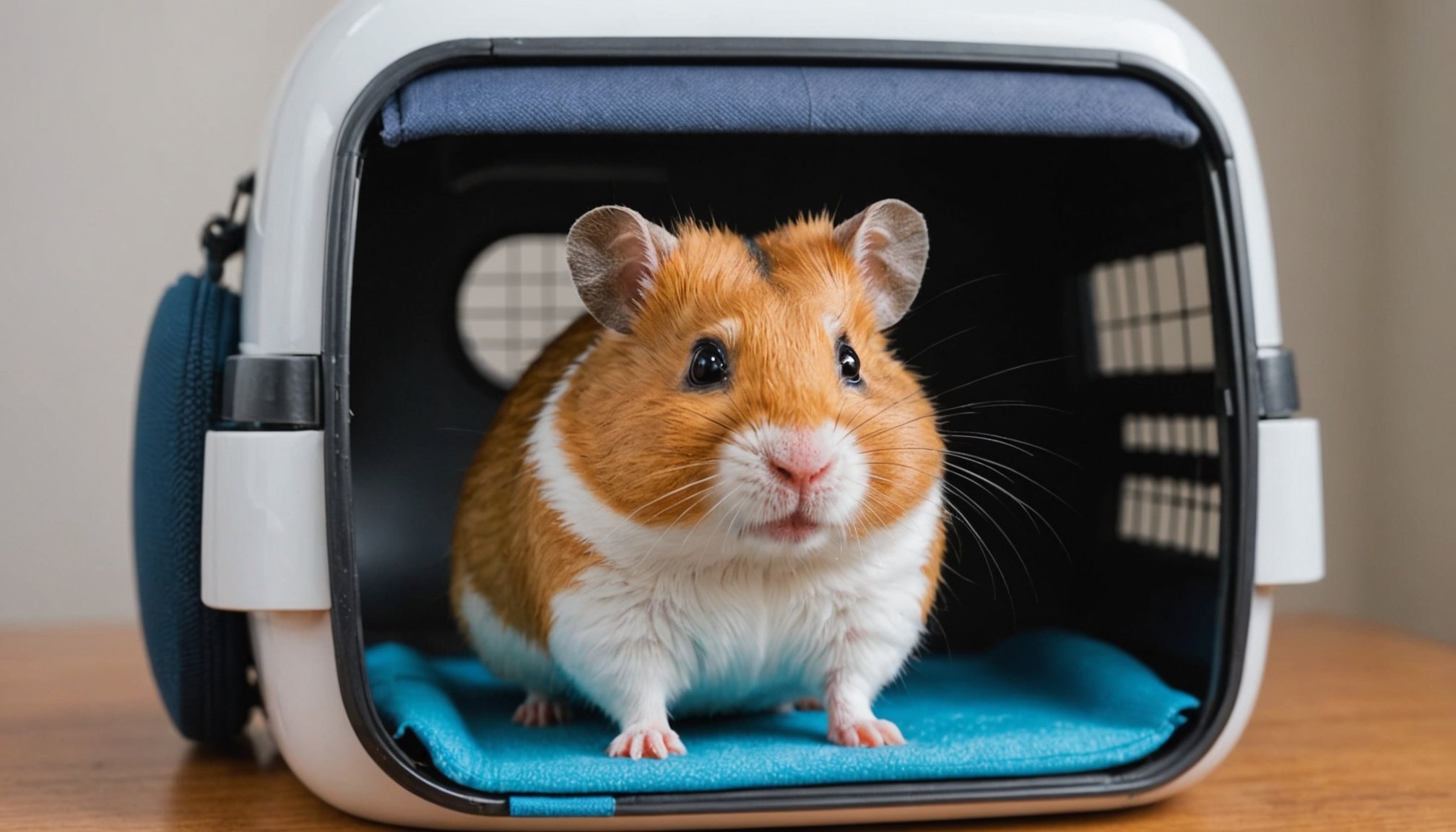Understanding Your Hamster’s Behavior During Travel
Hamsters, by nature, are creatures of habit. They find comfort in familiar environments, making them particularly susceptible to travel stress. When taking your hamster on a journey, it’s essential to recognize their behavior and how they respond to new stimuli. Hamsters are naturally skittish, often seeking refuge in cozy spaces. During travel, their instinctual need for comfort becomes pronounced.
A hamster’s stress can manifest in various ways. Common signs of travel stress include excessive grooming, bar biting, or even refusal to eat. Observing these behaviors is crucial. They indicate discomfort, signaling a need for interventions.
Also read : Top Strategies for Successfully Socializing Your Rescue Rabbit with Other Pets
To help your hamster acclimate to new travel environments, gradually introduce them to the travel carrier before the journey. Acclimation techniques can include short trips around the house, allowing them to associate the carrier with safety rather than threat. This method fosters familiarity, reducing anxiety during longer travels.
It’s also beneficial to use carrier bedding that smells like your hamster’s home, providing a sense of security and decreasing travel stress. Monitor their behavior closely and ensure they have access to food and water. By understanding and addressing your hamster’s behavior during travel, you can create a more comfortable and less stressful experience for your small furry friend.
Also to discover : Top Interactive Toys to Alleviate Stress in Your Pet Rats: A Comprehensive Guide
Training Techniques for a Stress-Free Experience
Introducing a carrier to your hamster can be a straightforward process if approached with precise training techniques and careful steps. The goal is to create a positive experience for your pet during this introduction.
Start by placing the carrier in your hamster’s environment to allow it to explore at its own pace. This initial step is crucial in ensuring the hamster’s comfort with the carrier. Once your pet becomes familiar with the new object, begin positive reinforcement. Placing a few treats inside the carrier encourages exploration and associates it with positive events. This technique serves as a foundation for behavior modification by rewarding desired behaviors.
To further encourage carrier use, consistent use of treats each time the hamster enters voluntarily can significantly improve results. Gradually, you can increase the duration your hamster spends in the carrier. Start with a few minutes and then slowly extend the time. This gradual change builds comfort over time and ensures a stress-free environment for your pet.
Finally, ensure the training sessions are calm and free from hasty actions. Each step-by-step progress should be gentle, promoting an anxiety-free atmosphere for your hamster.
Selecting the Right Carrier for Your Hamster
Choosing a hamster carrier that ensures both comfort and safety during travel is crucial. Key features to consider include size, durability, ventilation, and visibility. A proper-sized carrier allows your hamster to move comfortably but prevents excessive movement, which could increase stress during transit.
Essential Features
Ventilation is paramount; well-ventilated carriers ensure your hamster remains cool and has adequate air circulation to prevent overheating. Look for carriers with mesh sides or strategically placed air holes.
Visibility benefits both you and your pet. Clear panels or see-through tops allow you to check on your hamster frequently, reducing anxiety for both parties. However, balance visibility with privacy; partial coverings can provide a sense of security for your pet.
Popular Carrier Options
Hard plastic carriers are durable and offer excellent protection. These often come with top-opening lids, making it easier to access your pet. Fabric carriers may have better ventilation and are typically lightweight, yet they might lack the sturdiness of their plastic counterparts.
Safety Considerations
Ensure travel security by selecting carriers that close securely with latches or zippers. Padding the interior can shield your hamster from bumps during travel. By integrating these essential carrier features, you’ll be better equipped to select a suitable hamster travel carrier, ensuring a safe and pleasant journey for your furry friend.
Preparing for the Travel Day
Embarking on a trip with a hamster requires meticulous travel preparation. Crafting a well-thought-out pre-travel checklist ensures that nothing essential is overlooked. Begin by listing all your hamster’s necessities:
- Food: This should include their daily diet and some favourite treats.
- Water: Ensure a portable and secure water source that won’t spill in transit.
- Bedding: Pack enough materials to replenish their travel habitat as needed.
Adding these hamster essentials to your checklist not only secures their comfort but also gives you peace of mind.
On the journey, unforeseen disturbances can be stressful for your pet. Thus, pack a few familiar items like a favourite toy or a bit of their usual bedding, to provide a sense of normalcy amidst new surroundings.
To diminish noise and disruption, position your furry friend’s carrier away from high-traffic areas in the vehicle. Consider playing soft music to mask jarring sounds, keeping the environment calm. Such preparations are key to ensuring a smooth and stress-free travel experience both for you and your hamster. By thoroughly addressing these aspects, you can create an enjoyable journey for all.
Managing Anxiety During Travel
Travelling with a hamster can be a nerve-racking experience, not only for the pet but also for the owner. Implementing effective calming techniques can significantly alleviate hamster anxiety, ensuring a smoother journey. Before setting out, it’s essential to acclimate your furry friend to its travel carrier. This can be achieved by allowing your hamster to explore the carrier in a safe environment at home, offering treats and praise to create positive associations.
Familiar scents play a critical role in stress reduction. Incorporating items from your hamster’s regular cage such as bedding or toys into the travel carrier can provide the comfort of familiar smells, reducing the chances of panic. Additionally, these items can also keep your hamster entertained and distracted during the trip.
Monitoring your hamster’s behaviour during travel is paramount. If signs of distress like excessive squeaking or hyperactivity are noticed, take immediate action to adjust the environment. For instance, dimming the lights or lowering noise levels can help in soothing your pet. Traveling in a climate-controlled environment is ideal to ensure temperature fluctuations do not exacerbate stress.
By considering these elements, you can embark on a journey that takes into account the well-being and emotional health of your hamster.
Post-Travel Care for Your Hamster
After a journey, your hamster’s health may require close monitoring to ensure its well-being. Identifying if your hamster needs immediate attention is crucial. Look for signs such as lethargy, loss of appetite, or abnormal behaviour. If any of these symptoms persist, consulting a vet is advisable.
Creating a comfortable environment is vital for your hamster’s recovery post-travel. Ensure the habitat is clean, quiet, and consistent with familiar elements, which helps alleviate stress. This comforting setup encourages your pet’s natural behaviours, facilitating a smooth transition back to its routine.
Moreover, maintaining a regular routine plays a critical role in hamster health. Consistent feeding times and regular play will reassure your pet and bring stability. Re-establishing routine helps your hamster adapt and flourish after disruptions.
Recovery tips can further assist in easing this transition. Minimise handling during the initial recovery phase to reduce stress. Offer favourite treats and ensure access to fresh water and a balanced diet. These practices foster comfort and support your hamster’s return to normalcy. Addressing post-travel needs thoughtfully ensures your hamster stays healthy and happy.











